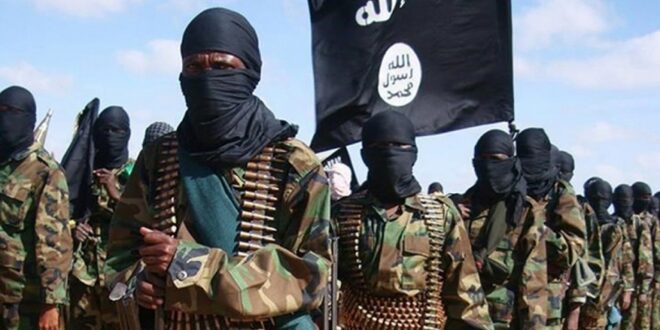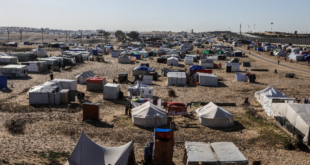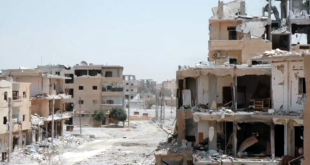ISIS is increasingly making its presence felt: participants in the riots in Colony No. 19 in the Volgograd Region and Pre-trial Detention Center No. 1 in the Rostov Region have claimed ties to the Islamic State, the group has claimed responsibility for a large-scale terrorist attack in the Crocus City Hall, and the recent attack in Solingen, Germany, is linked to ISIS — and these are only the terrorist attacks that could not be prevented. After military defeats in Syria and Iraq, the terrorist group has lost territory and funding, and in the public consciousness, they have become something of the past, like the coronavirus pandemic. But ISIS has not only survived, but will soon expand its cells in Europe, Russia, and Turkey and attempt to carry out new terrorist attacks, according to Antonio Giustozzi from the Royal United Services Institute (RUSI).
On the verge of bankruptcy
By 2020, it seemed that the Islamic State (IS) was no longer a threat. The group had lost all territory in Syria and Iraq, its leaders were being hunted, and the press wrote mainly about its defeats. The organization was considered doomed not only by Western media and politicians, but also by its sponsors: sources in IS admitted that raising funds for its existence had become significantly more difficult in 2019. Donors – usually wealthy people from the monarchies of the Persian Gulf – were also convinced that the Islamic State had been defeated and its existence had lost all meaning. In addition, due to the changing geopolitical situation, support for the Sunni IS, which fought, among other things, Iran and Shiites, was losing popularity among wealthy Arabs.
The year 2023 marked the nadir of the Islamic State, the opposite of its zenith, the lowest point in its history. The organization’s funding had dwindled to a trickle. Some of its branches could not even feed their fighters, let alone pay them. In regions where the group had previously been active, operations had virtually stopped. The crisis had become so severe that the ISIS leadership, hiding on the border between Turkey and Syria, decided to risk its remaining human and financial resources in an attempt to “restart” its activities.
The year 2023 marked the Islamic State’s nadir, the opposite of its zenith, the lowest point in its history.
By the time the decision was made, ISIS’s ability to carry out attacks was limited. Most of the group’s cells in Europe had been destroyed. The Islamic State had not invested much in rebuilding them, perhaps because European counterterrorism services were becoming increasingly effective, and this seemed a waste of scarce personnel. For years, the Islamic State had relied on loosely coordinated volunteers to carry out attacks with knives or vehicles. But even these attacks were becoming less frequent, as the public perceived that ISIS was losing, and the group was struggling to motivate potential supporters to carry out new operations. The attacks were also receiving less and less media coverage, which was precisely the group’s goal.
At the time of the renewed attacks in Europe, Turkey and Russia, the IS supporters were mostly veterans of the conflicts in Iraq and Syria – people who had waged a full-fledged war against the enemies of the “caliphate”. Most of those deemed suitable for future attacks were Central Asians who had become unnecessary in Syria when the “Islamic State” switched from open warfare to guerrilla warfare. They had not been trained for covert operations, although they were skilled in the use of weapons.
At the time of the resumption of terrorist attacks, the IS supporters were mostly veterans – people who had waged a full-fledged war against the enemies of the “caliphate”
For more than two years, these Central Asian veterans have been the main players in nearly all of ISIS’s largely unsuccessful attempts to stage attacks in Europe, Turkey, Russia, Iran and elsewhere, with the exception of two attacks on the Shah Cheragh mausoleum in Shiraz, Iran, in 2022 and 2023 .
However, in January and March 2024, ISIS managed to carry out large-scale terrorist attacks – in the Iranian Kerman (then, as a result of two explosions at a funeral ceremony for Iranian General Qasem Soleimani, 94 people were killed and more than 280 were injured) and in the Russian Crocus City Hall (as a result of an attack during a concert of the Piknik group, more than 140 people were killed , 500 were injured, and the concert hall was completely burned down). The terrorist attack in Russia occurred just five days after the presidential elections and took place despite warnings from US intelligence.
New successes
The attack on Crocus was, of course, widely covered by the world media, which apparently led to a significant improvement in the financial situation of ISIS. In Europe, there were fears that the Islamic State would try to repeat such actions, and the Summer Olympics in Paris could have been an ideal target for this. However, the group was unable to carry out its threats. Perhaps ISIS never seriously tried to strike Paris, which the whole world was watching in August. Instead, there was an attack in Solingen, Germany ( three people died ) and threats of terrorist attacks on several Taylor Swift concerts in Vienna (unlike the Russian special services, the Austrian ones responded to the warnings of American intelligence, cancelled the concerts and detained the suspects). They are notable above all because they indicate a return of ISIS to “volunteer” attacks without organizational support and using primitive means.
The Islamic State has seemingly abandoned the idea of recruiting volunteers with limited attack capabilities and minimal organization. Why return to that strategy? Perhaps the successful attacks of early 2024, which created a media sensation, raised the morale of ISIS sympathizers in Europe, making it easier to mobilize them.
However, it is not yet possible to say whether the attack in Germany and the foiled attack in Austria were really the work of ISIS. This can only be confirmed when the police have completed their investigation and released information. But if involvement is established, it would mean that ISIS is not capable of carrying out attacks like Crocus on a regular basis, especially in Europe, where it is difficult to obtain weapons for such attacks. In the meantime, the organization is trying to fill the media vacuum with smaller attacks in its old style. And the Islamic State will likely continue to carry out new – and larger – attacks, since they are needed to restore a steady flow of funding.
ISIS will likely continue to launch new and larger attacks as the organization needs them to restore a steady flow of funding.
Finally, it is worth remembering that in the Muslim world, ISIS faces competition for the attention of the average person. The war in Gaza has become a serious embarrassment for the organization, demonstrating once again that while Hamas is fighting Israel, ISIS has not shown itself in this fight and until recently focused exclusively on killing other Muslims. Perhaps the situation in Gaza contributed to the fact that the Islamic State decided to curtail its attacks on “hostile” Muslim targets, and forced ISIS to increase its presence in the media, so that Hamas and the hated Iranians do not steal the attention of Muslim communities.
The group lacks the resources to attack Israel, and is unlikely to have them, except in the form of support for isolated attacks on its territory. ISIS has tried to solve this problem by targeting targets that its propaganda can link to Israel, mostly synagogues and similar sites. Russian authorities reported at least one attempted attack on a synagogue before the attack on Crocus in March, and in June, ISIS supporters attacked a synagogue in the Caucasus. Turkish authorities have also reported preparations for attacks on synagogues. But these attacks have done little to change the image of ISIS, which lags far behind Hamas in popularity among Muslim diasporas in Europe. Given that the group is trying to create a grassroots funding system, with funds coming from personal donations from its many supporters, this is a problem.
Shortage of personnel
No one has any data on ISIS’s resources – perhaps not even the group itself, since it relies on sympathizers in other countries, whose capabilities are limited. Yes, the Islamic State has several thousand members trained for guerrilla warfare in Africa, Afghanistan, Pakistan, Syria and Iraq, but these fighters play a modest role in its current strategy. ISIS still leads two significant insurgent movements (in the Sahel and Nigeria), while elsewhere – Syria, Iraq, Afghanistan, Pakistan and Mozambique – it appears to be keeping military operations to a minimum.
This is likely due to the recognition that the group does not have the capacity to finance full-scale wars as it once did. The ISIS leadership is still able to implement its strategies, although it appears to be allowing for an increasing degree of decentralization. This is most likely a result of the lack of resources to maintain the formidable bureaucracy required to control numerous remote “branches.”
Much more important is the role of the Islamic State cells in Russia, Turkey and Europe, each of which consists of several people. ISIS supporters in the EU and Russia also help with propaganda, recruitment and fundraising. There are even more such helpers in Turkey. In total, the ISIS terrorist apparatus probably numbers several hundred people.
The ISIS terrorist apparatus probably numbers several hundred people.
The group’s main focus now is not recruiting new fighters, but raising funds. The organization has more supporters than it can support. So it is focused on recruiting educated people who can effectively manage underground operations and plan and carry out attacks. Recruitment potential remains high, especially among people from Central Asia and Afghanistan. In general, IS targets young men who have faced humiliation or discrimination. Given the increasingly dispersed nature of Islamic State operations, it relies on social media for recruitment, and appears to have had some success. Recruitment and propaganda operations are ongoing online, something the IS leadership clearly sees as useful.
The main task of ISIS now is not recruiting new fighters, but raising funds. The organization has more supporters than it can support
Fundraising is also moving online, often using cryptocurrency. ISIS’s main problem is training well-trained terrorist cells, as the group’s bases and camps are currently quite far from attack sites. ISIS is reportedly trying to set up training camps in Turkey, but given the level of surveillance the group maintains, such centers are more in name than in practice.
This puts ISIS in a difficult position. Conducting high-profile attacks requires well-trained cells that can operate covertly, underground. Without training, this will be difficult to achieve, especially against security forces that have spent years refining their counterterrorism processes and adopting new technologies. The Islamic State still poses a threat, but it is not the same as it once was.
 Eurasia Press & News
Eurasia Press & News




